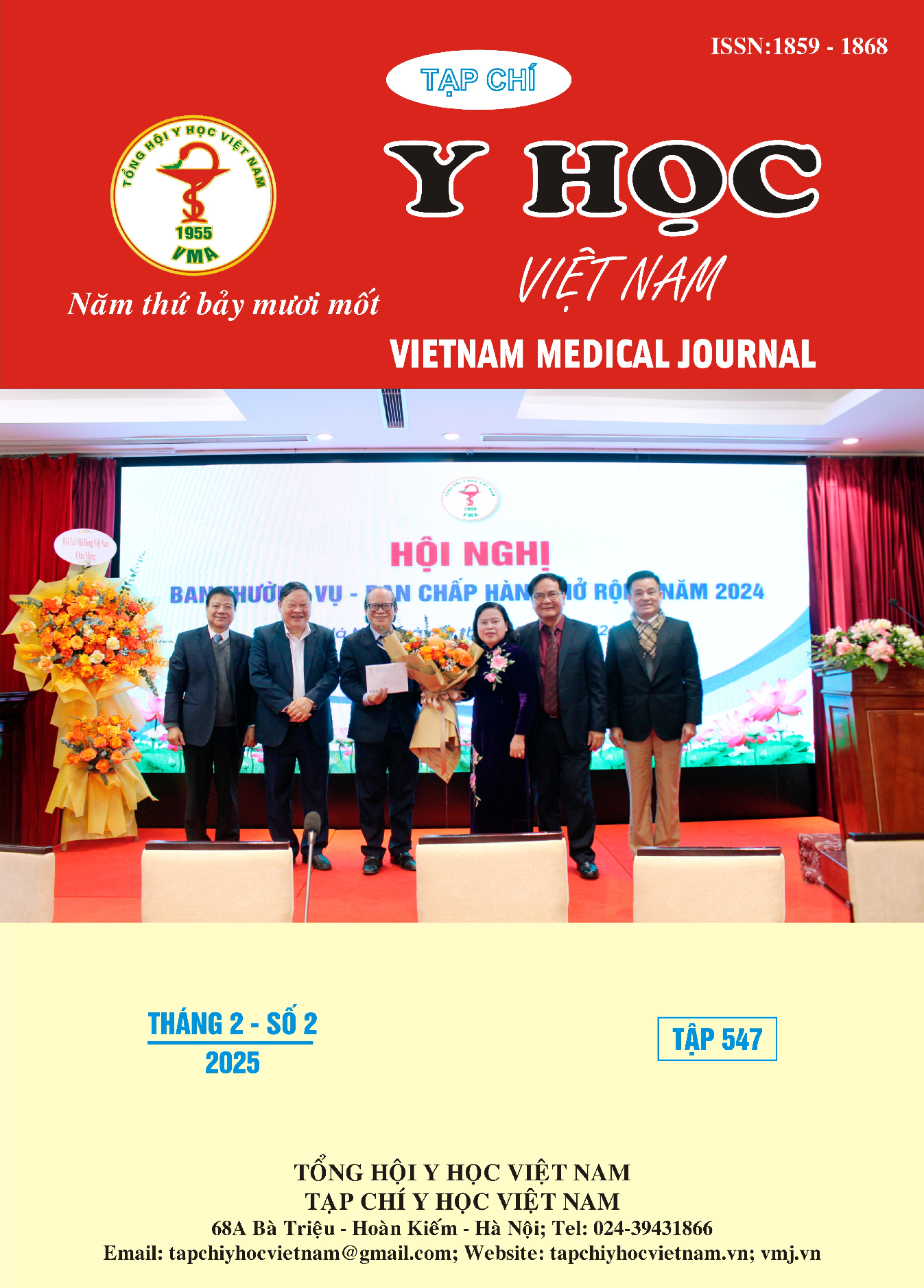PREMATURE REMOVAL RATE OF LEVONORGESTREL-RELEASING INTRAUTERINE SYSTEM (LNG-IUS) AND RISK FACTORS FOR THE TREAMENT OF BENIGN UTERINE DISEASES AT TU DU HOSPITAL
Main Article Content
Abstract
Objective: The objective of this study was to evaluate the premature removal rate of Levonorgestrel-releasing intrauterine system and risk factors of premature removal in the treament of benign uterine diseases at Tu Du Hospital. Methods: A cross-sectional study on one hundred eighty seven (n=187) patients with benign uterine diseases such as: adenomyosis, uterine leiomyoma, endometrial hyperplasia being treated by LNG-IUS were included between October 2018 and May 2019 at Tu Du Hospital. Results: The patient,s mean age was 41,7 ± 6 years. Fourteen (7,5%) patients underwent premature LNG-IUS removal, which mostly occurred during the first 3 months and improved as time passed. Risk factor of premature LNG-IUS removal was associated with prolonged vaginal bleeding over 8 days (PR = 7,94; CI 95% 1,88-33,46; p=0,005). The most common side-effects were vaginal spotting (n=152; 81,3%), amenorrhea (n=39; 20,9%), heavy vaginal bleeding (n=29; 15,5%), prolonged vaginal spotting (n=25; 13,4%), expulsion (n=24; 12,8%). Risk factors for expulsion included heavy menstrual bleeding, large uterine volume. LNG-IUS improved significantly in dysmenorrhea (94,7%) and heavy bleeding (84,5%). Satisfactive rate was 79,7%. Conclusion: The data suggest that premature LNG-IUS removal rate and side effects is low. LNG-IUS is a suitable alternative option for treament of benign uterine diseases prior to hysterectomy.
Article Details
Keywords
Levonorgestrel-releasing intrauterine system, adenomyosis, uterine leiomyoma, endometrial hyperplasia.
References
2. Intira Sriprasert Tarita Pakrashy, Thomas Kimble, David F. Archer (2017). Heavy menstrual bleeding diagnosis and medical management. Contraception and Reproductive Medicine, 2-20.
3. Kailasam C, Cahill D (2008). Review of safety, efficacy and patient acceptability of the levonorgestrel-releasing intraterine system". (2), 293-301.
4. Kalpana S, Bharati Geetam, Prasad Dipali, et al. (2017). Role of levonorgestrel releasing intrauterine device in management of heavy menstrual bleeding: a conservative approach. International Journal of Reproduction, Contraception, Obstetrics and Gynecology,6(2), 631-635.
5. Katherine D Pocius Deborah A Bartz (2018). Intrauterine contraception: management of side effects and complications. UpToDate.
6. Ngô Thị Yên, Phạm Việt Thanh (2014). Hiệu quả của dụng cụ tử cung chứa Levonorgestrel trong điều trị rong kinh-cường kinh và đau bụng kinh do lạc nội mạc tử cung. Tạp chí Phụ sản Việt Nam, 11 (4), 56-59.
7. Park DS., Kim ML., Song T., et al. (2015). Clinical experiences of the levonorgestrel-releasing intrauterine system in patients with large symptomatic adenomyosis. Taiwan J Obstet Gynecol, 54 (4), 412-5.
8. Suhair W, Khreisat Basel M, Al Shwaiyat Rami, et al. (2015). Acceptability and efficacy of levonorgestrel intrauterine device for treatment of menorrhagia. Journal of Basic and Applied Research International, 2 (2), 48-56.


